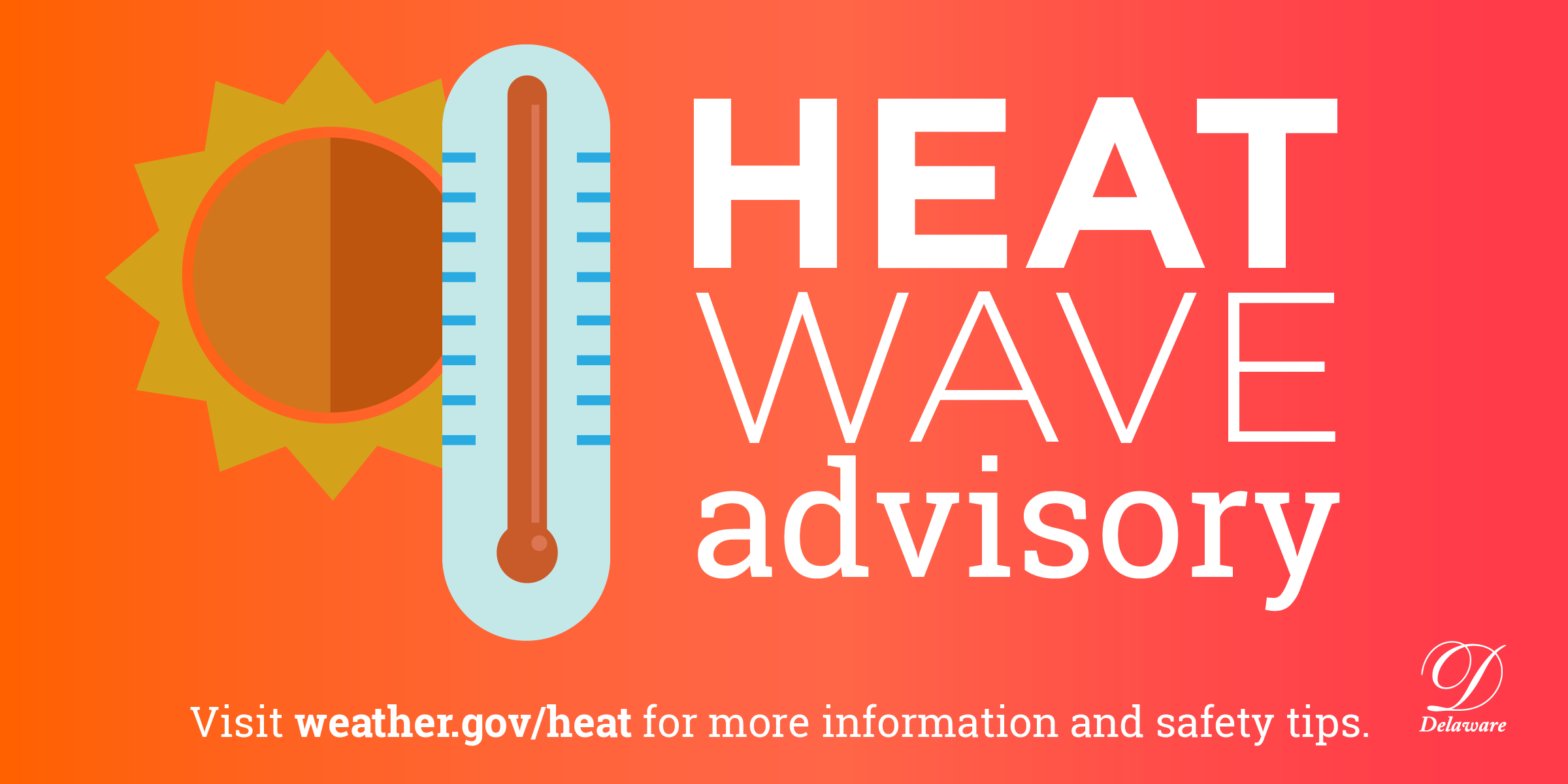Governor Carney Urges Delawareans to Stay Safe During Heat Warnings
Former Governor John Carney (2017-2025) | Office of the Governor | Date Posted: Friday, July 19, 2019
Former Governor John Carney (2017-2025) | Office of the Governor | Date Posted: Friday, July 19, 2019

DOVER, Del. – Delaware, along with many other states, is in an extended heatwave with the most dangerous days to come. The National Weather Services issued an Excessive Heat Warning through Sunday night for the entire state, and the state also issued a Code Orange Air Quality Alert. Delawareans and visitors are advised to be aware of the dangers that accompany the severe temperatures, as well as ways to avoid heat-related illness or death.
“With the excessive heat warnings and air quality alerts issued for Delaware and our region, I urge all Delawareans to practice heat safety during this stretch of high temperatures,” said Governor Carney. “We want our residents and visitors to follow the advice of health officials and take steps to beat the heat. Please never leave children or pets in cars, stay hydrated, learn the signs of heat illness, and take appropriate precautions to stay safe in hot temperatures and all summer.”
Health officials also advise the public to stay in air conditioned spaces, avoid strenuous outdoor activities, wear light clothing, and drink plenty of water. Delawareans should check on vulnerable members of their families and neighbors, including seniors and those with access and functional needs.
Authorities also stress that temperatures inside a closed vehicle can rise to lethal levels quickly. Do not leave children, pets, or vulnerable adults inside closed vehicles even for a few minutes. Parents and caregivers are urged to make it a habit to check the back seat every time they exit a car.
If possible, bring outdoor pets inside. If they are outside, make sure to provide plenty of water and replace it frequently.
.
For more information, visit the CDC at cdc.gov/extremeheat/warning.html.
###
Keep up to date by receiving a daily digest email, around noon, of current news release posts from state agencies on news.delaware.gov.
Here you can subscribe to future news updates.
Former Governor John Carney (2017-2025) | Office of the Governor | Date Posted: Friday, July 19, 2019

DOVER, Del. – Delaware, along with many other states, is in an extended heatwave with the most dangerous days to come. The National Weather Services issued an Excessive Heat Warning through Sunday night for the entire state, and the state also issued a Code Orange Air Quality Alert. Delawareans and visitors are advised to be aware of the dangers that accompany the severe temperatures, as well as ways to avoid heat-related illness or death.
“With the excessive heat warnings and air quality alerts issued for Delaware and our region, I urge all Delawareans to practice heat safety during this stretch of high temperatures,” said Governor Carney. “We want our residents and visitors to follow the advice of health officials and take steps to beat the heat. Please never leave children or pets in cars, stay hydrated, learn the signs of heat illness, and take appropriate precautions to stay safe in hot temperatures and all summer.”
Health officials also advise the public to stay in air conditioned spaces, avoid strenuous outdoor activities, wear light clothing, and drink plenty of water. Delawareans should check on vulnerable members of their families and neighbors, including seniors and those with access and functional needs.
Authorities also stress that temperatures inside a closed vehicle can rise to lethal levels quickly. Do not leave children, pets, or vulnerable adults inside closed vehicles even for a few minutes. Parents and caregivers are urged to make it a habit to check the back seat every time they exit a car.
If possible, bring outdoor pets inside. If they are outside, make sure to provide plenty of water and replace it frequently.
.
For more information, visit the CDC at cdc.gov/extremeheat/warning.html.
###
Keep up to date by receiving a daily digest email, around noon, of current news release posts from state agencies on news.delaware.gov.
Here you can subscribe to future news updates.